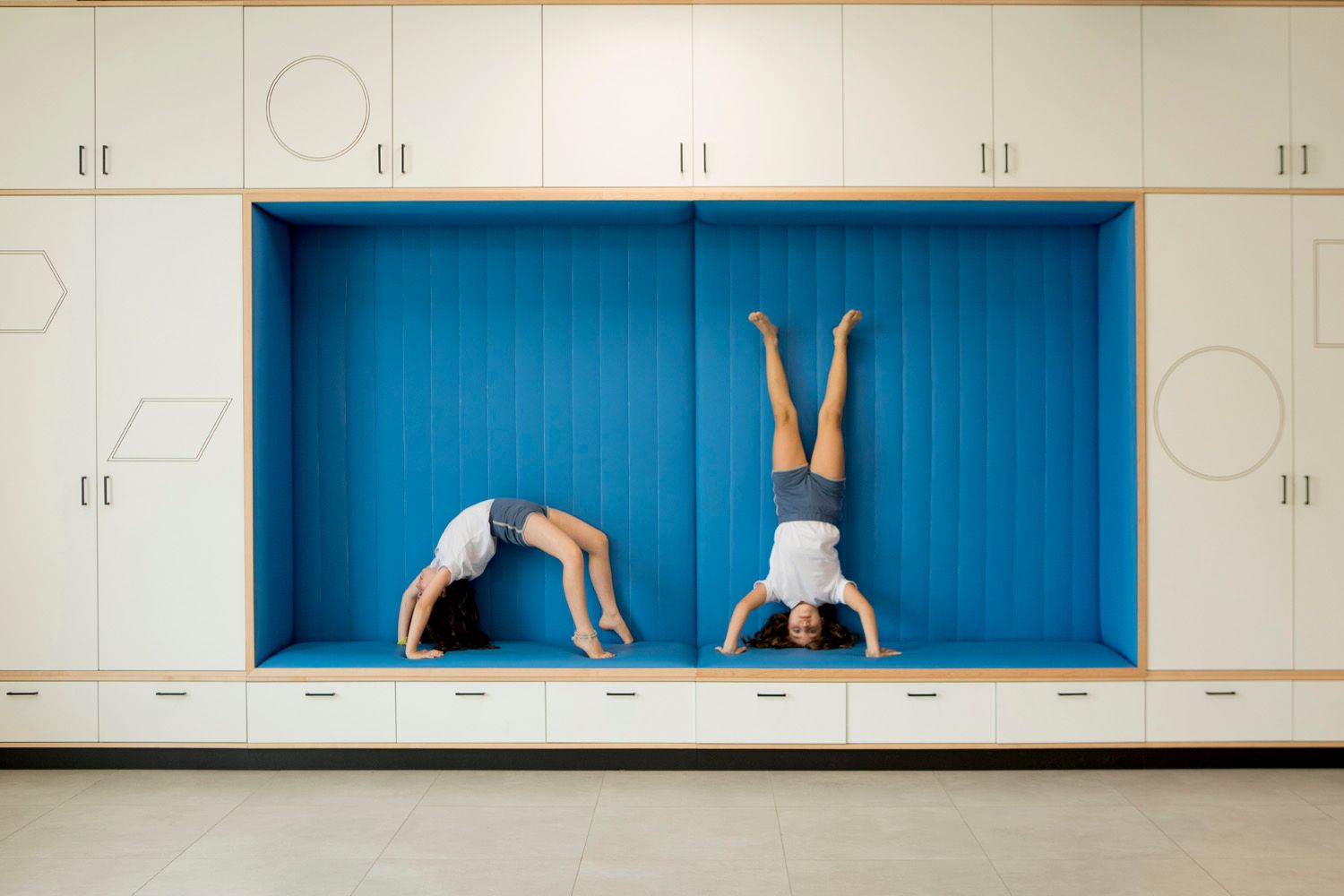Tel Aviv’s first inclusive school reinterprets how a well-designed pedagogical environment accessible to everyone should look like in the 21st century. Accessibility, equality, aesthetics and functionality in a single space. Let’s see the details.
Israeli designer Sarit Shani Hay plays a pioneer role in the field of children-oriented design. Her works start out from the basic theorem that the built environment is an important factor influencing the development of children: “I believe a well-designed environment improves the children’s living standards, welfare, it improves their sensitivity and provides an atmosphere where they can be creative, but above all, where they can feel free, safe and loved” – Sarit highlights.
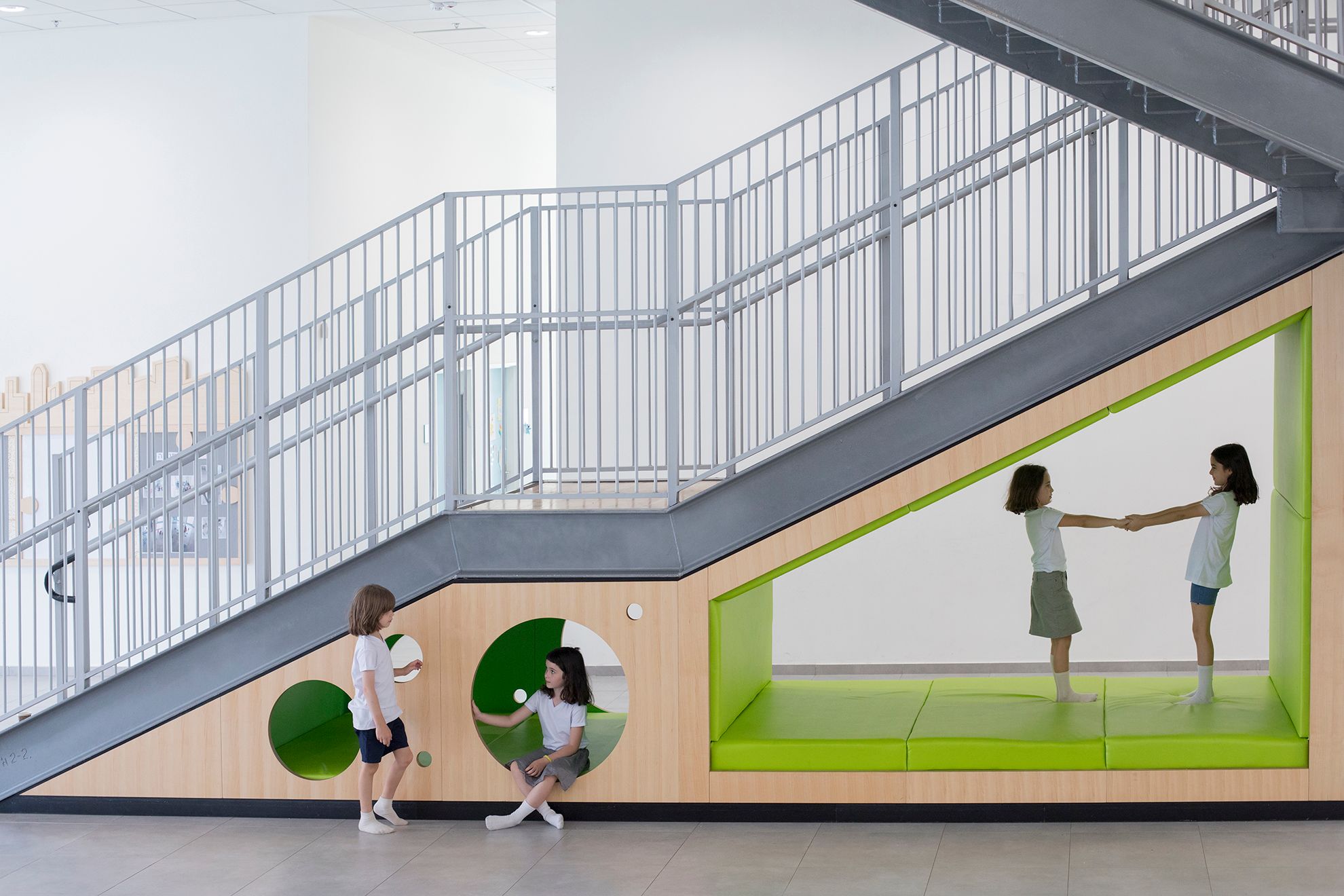
Her passion for children-oriented design started when she wanted to design a room inspiring in terms of colors, textures and shapes for her daughter, Emanuelle:
“The one I created 27 years ago was probably the most important project of my life. A sudden feeling of creativity and desire urged me to design my daughter’s room – Emanuelle’s birth was a turning point in my life, which also helped me find my professional mission. I always laugh when I think that my career is of the same age as my daughter. The rooms of my daughter and son represent the beginning of my professional journey. My profession was born out of love” – the designer told us.

May it be an interior, a kids’ room or kids’ furniture, Sarit’s concepts are built around the motifs of games and playing. In her designs, aesthetics are combined with functionality and humor, allowing a much needed space for fantasy and imagination. The interior and furniture designed for Bikurim public school was focused on joyful experiential learning; the peculiarity of the project is that this the first initiative in Tel Aviv that intends to use the means of inclusive pedagogy and transplant them into a physical environment.
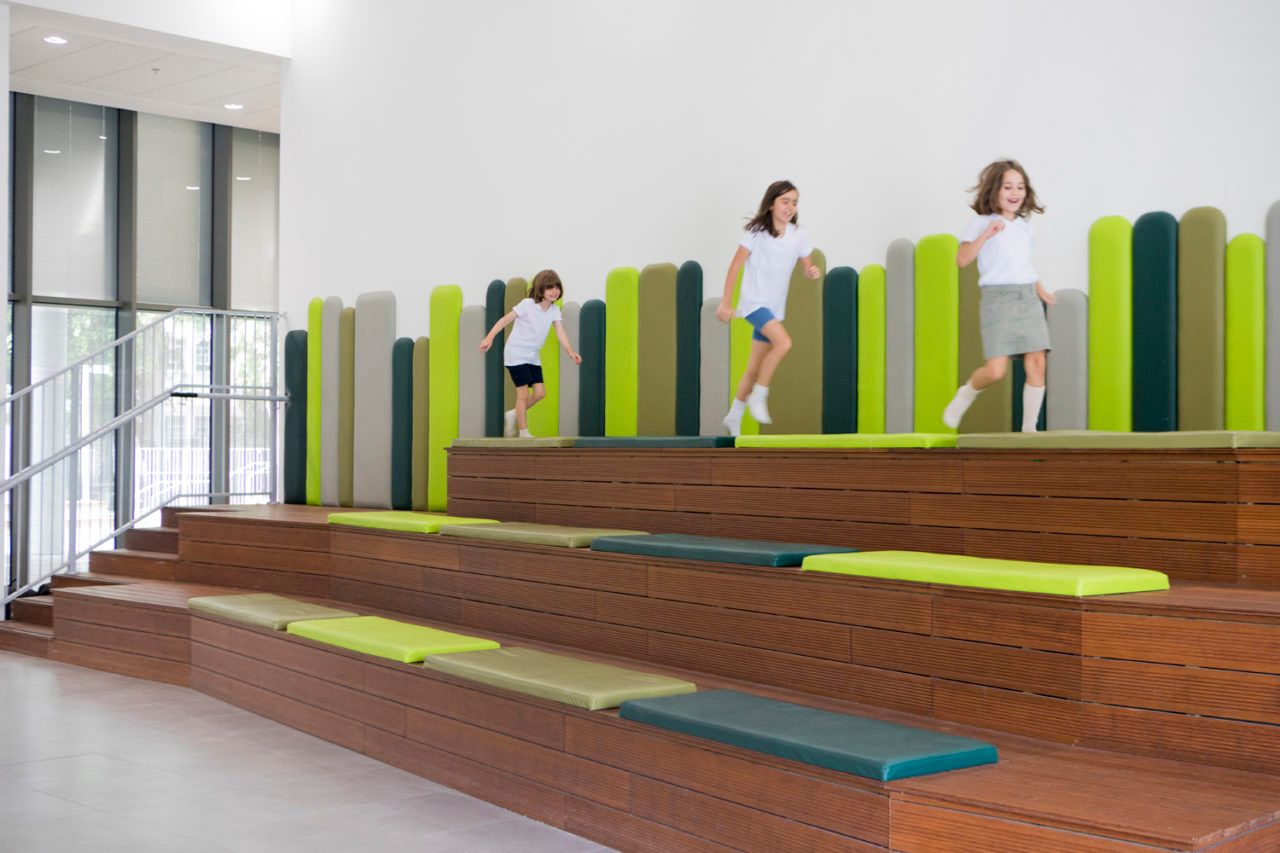
The school situated in Sarona district lays a great emphasis on the social integration of children with disabilities. In addition to the non-disabled children attending the school, many of its students have learning difficulties, have some kind of disability or is on the spectrum. In order to establish an environment that is inclusive, inspiring and interactive for everyone, special elements including an aid resembling a giant abacus, containing Braille signs and facilitating the acquisition of sign language were installed in the school. The recesses and nooks established in the walls shaped like geometric forms offer an intimate space for resting or reading.
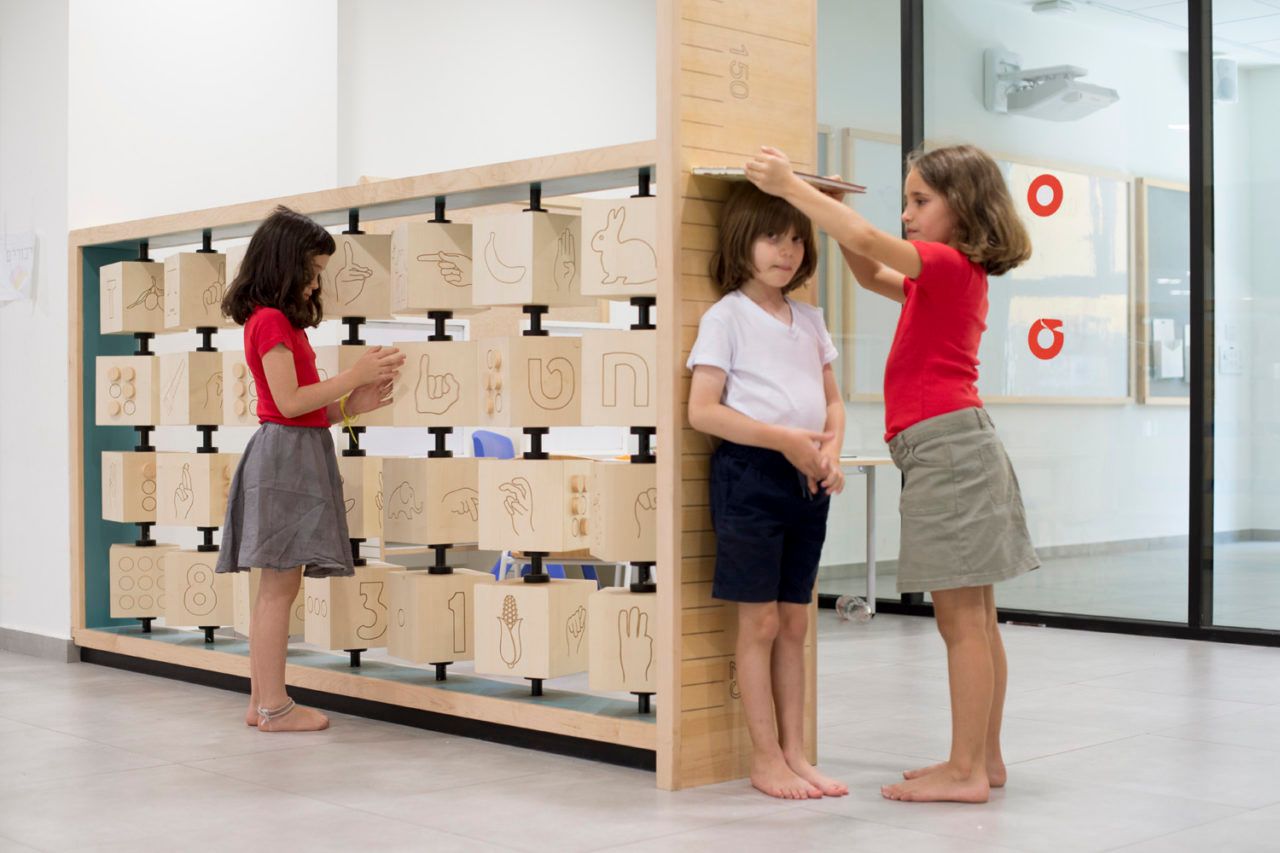
Additional special elements include the modular U-shaped seats, which can be formed into a circle by arranging them to face each other. This way, anyone can join those using the furniture freely, including students in wheelchairs.
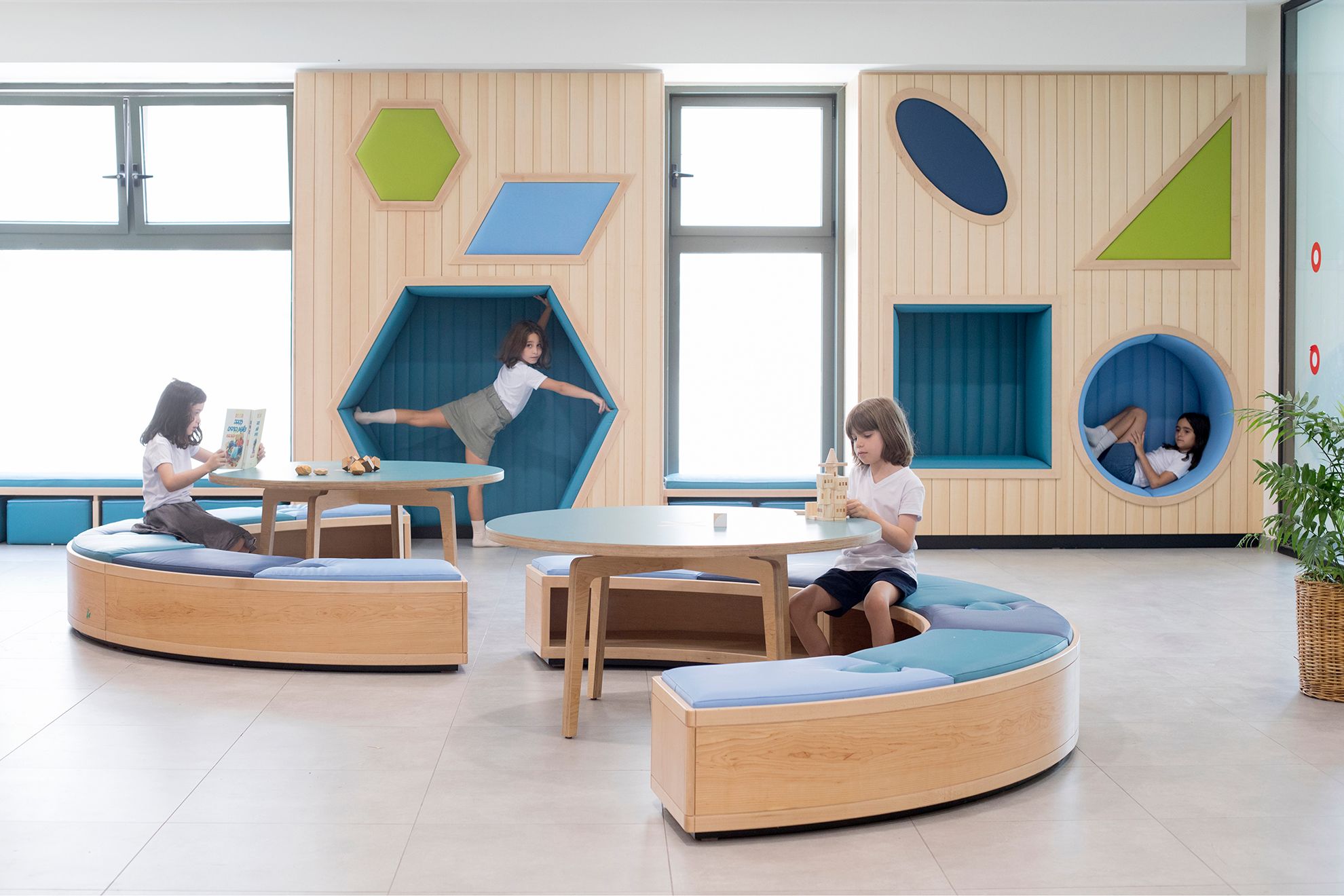
In the community spaces connecting classrooms, elements and units allowing students to improve various skills were placed. In addition, every separate space is divided with a glass wall: a common feature of contemporary learning spaces.

The concept is complemented with a yoga room, a meditation space and a physicoteraphy room. The indoor elements are made of wood, and are dominated by calm tones, such as green and blue.
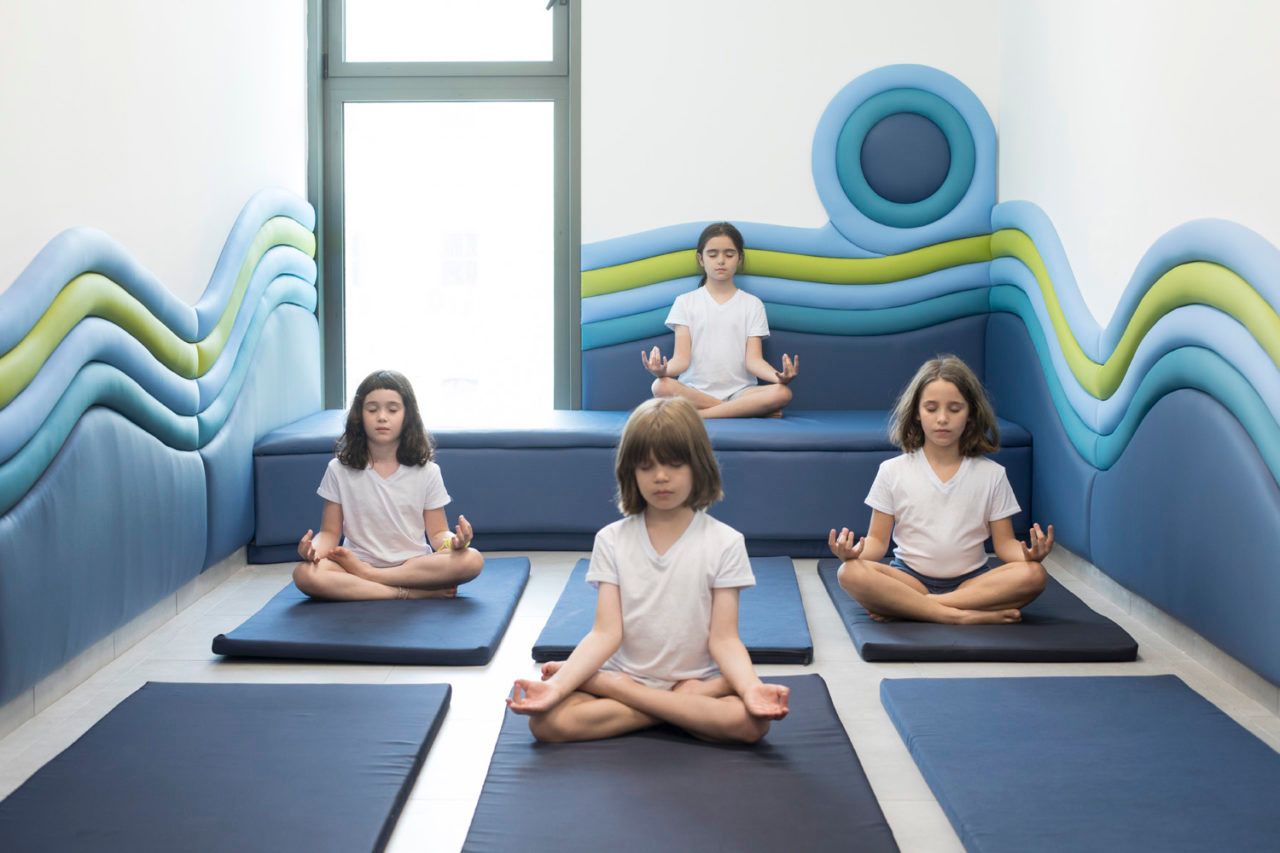
“Carefully designed learning spaces play a key role in developing students’ skills, and this is enforced more and more consciously in the case of school buildings designed in the past few years. We live in a time of significant cultural and technological changes. The methods of teaching are changing, and so is the built environment surrounding us. I think it’s an important task of the experts and designers working on this field to respond to these changes. In creating the interiors of Bikurim school, the greatest challenge was the profound research preceding the design and understanding all aspects of inclusivity. Our main task was to establish a novel pedagogical environment, with the diversity of students in mind. We had to reinterpret the spaces of the school in a manner transforming them into an environment that can be used by everybody and in a manner making everyone feel unique and that they belong here” – the designer summarized.
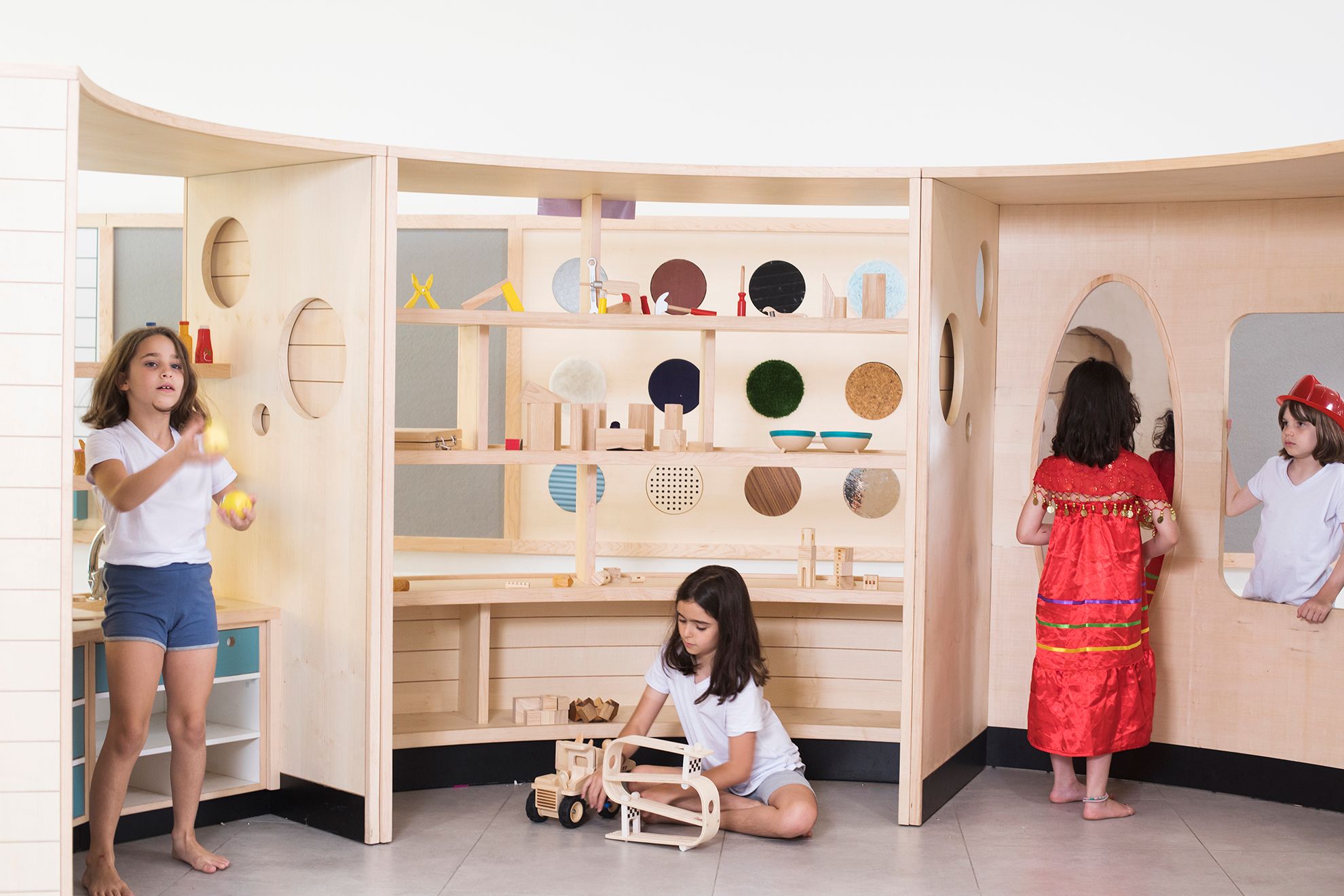
Sarit Shani Hay’s inclusive interior design for Bikurim elementary school won the Jury Prize of FRAME Awards 2020, in the Social Award category.
Interior concept and furniture design: Sarit Shani Hay
Architect: L2 Tsionov Vitkon Architects
Photography: Roni Cnaani
The project was commissioned by the Local Government of Tel Aviv and the Inclu Foundation.
Sarit Shani Hay Design Studio | Web | Facebook | Instagram
Our INCLUSIVE article series presents projects that raise awareness to the society-shaping role of design and that promote the social visibility of people with disabilities and their self-determination through the means of inclusive design.

A touchless touch | Glamos

The world’s first non-melting ice cream | Bompas & Parr










